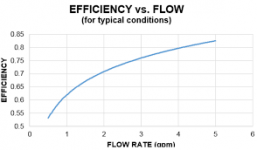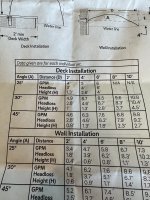- May 3, 2007
- 18,203
- Pool Size
- 20000
- Surface
- Plaster
- Chlorine
- Salt Water Generator
- SWG Type
- Hayward Aqua Rite (T-15)
Sorry, TOTAL GPM from the pump should be the same.
But there is no good reason to plumb the panels as you have shown above. Simply connect the two sets at the headers and you have a better setup. No cross pipe necessary.
But there is no good reason to plumb the panels as you have shown above. Simply connect the two sets at the headers and you have a better setup. No cross pipe necessary.



